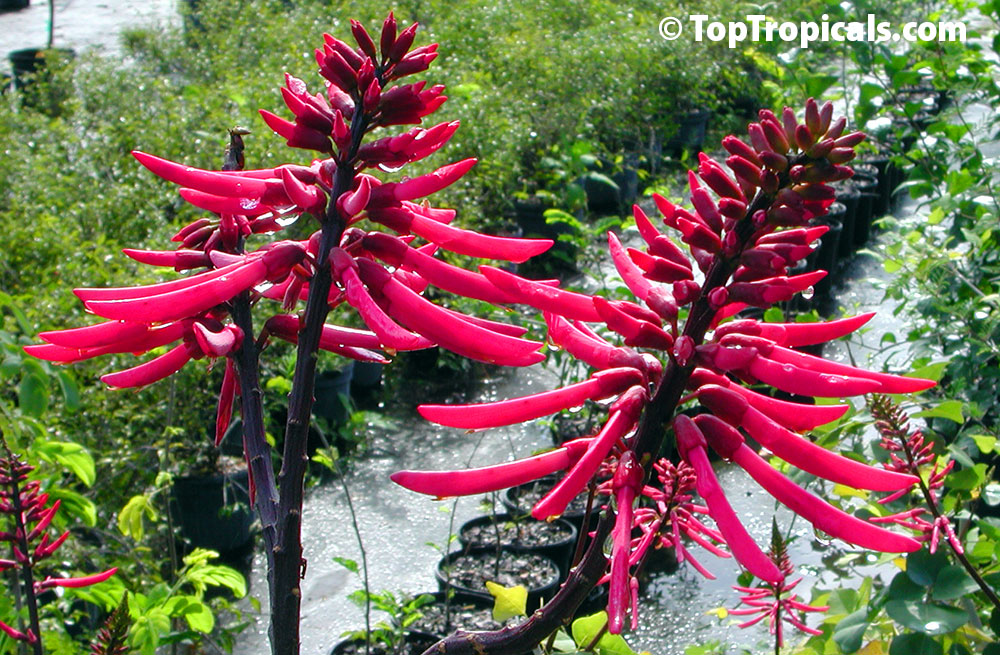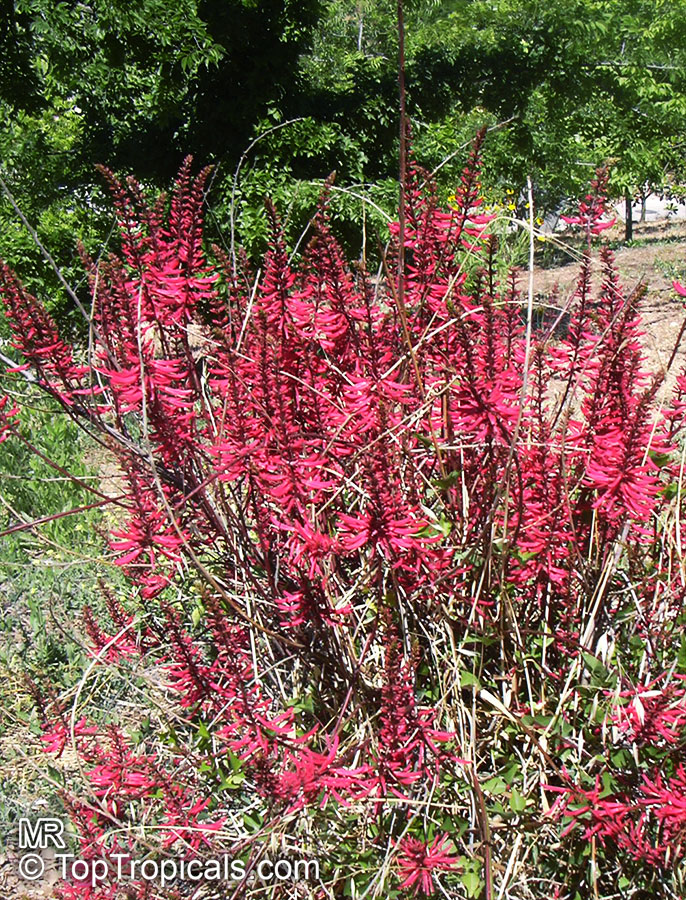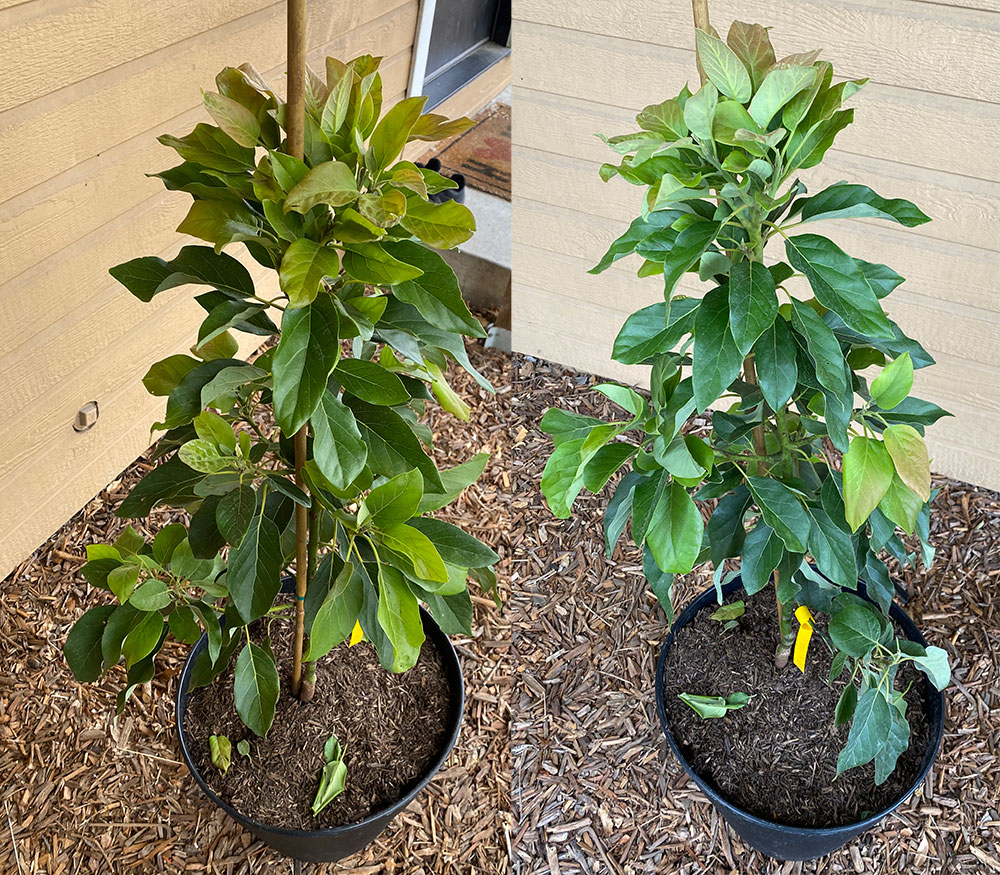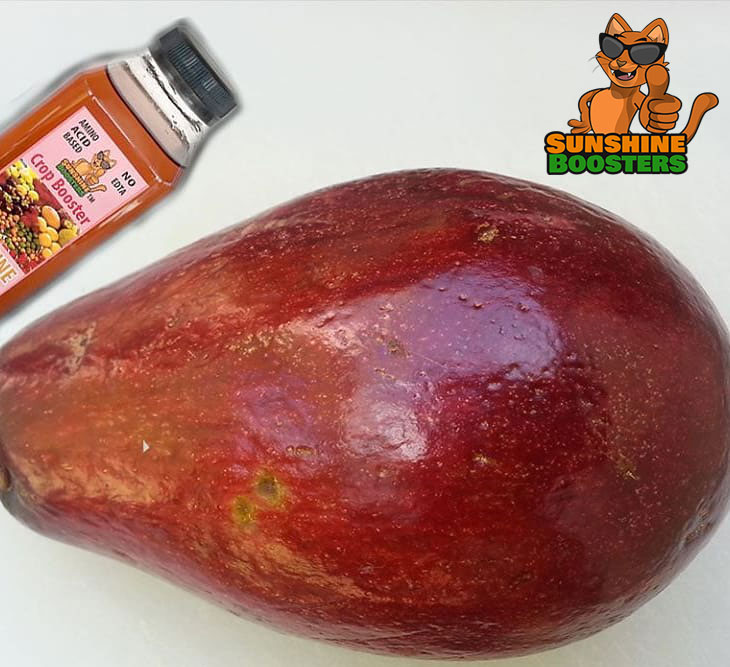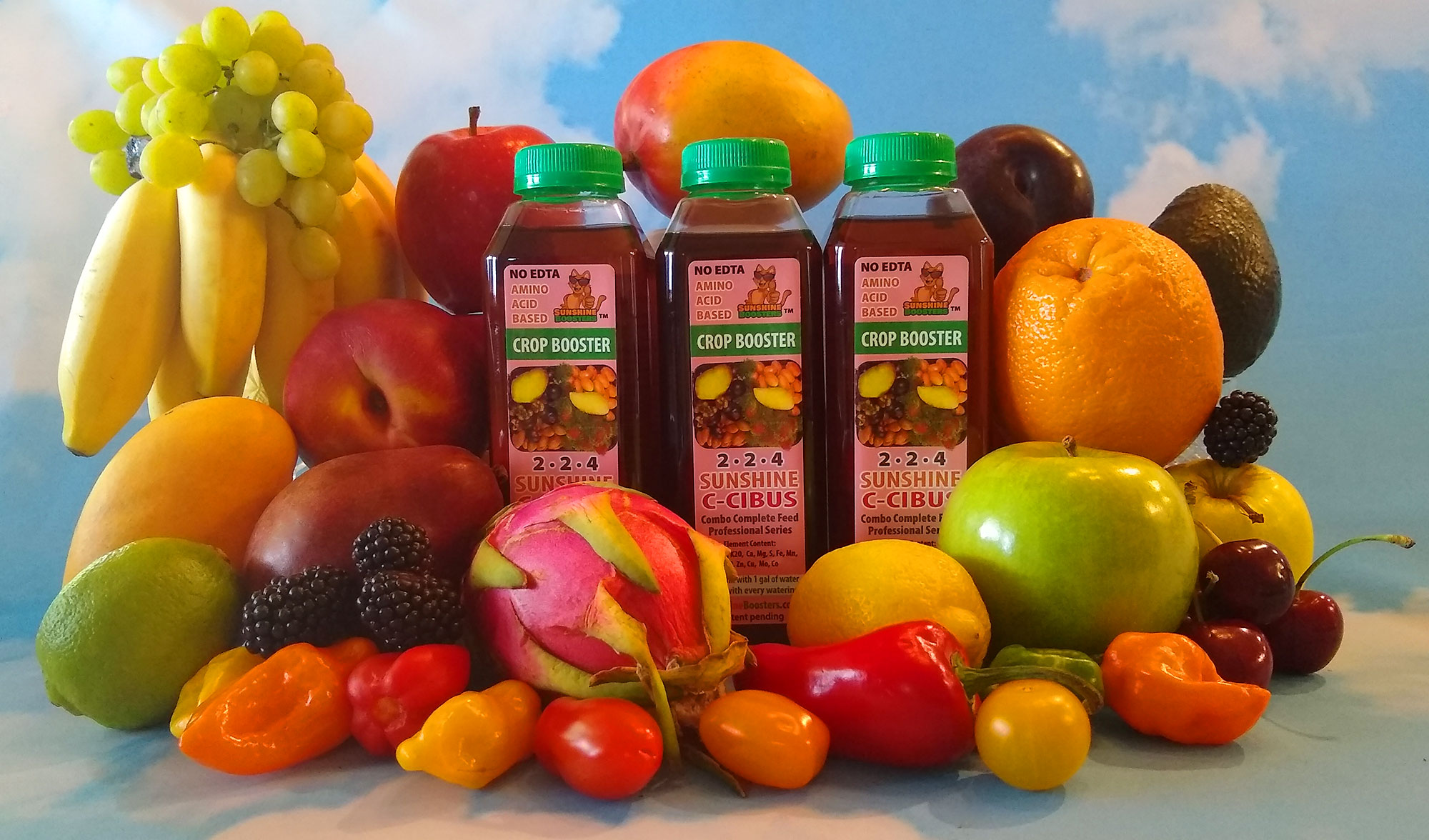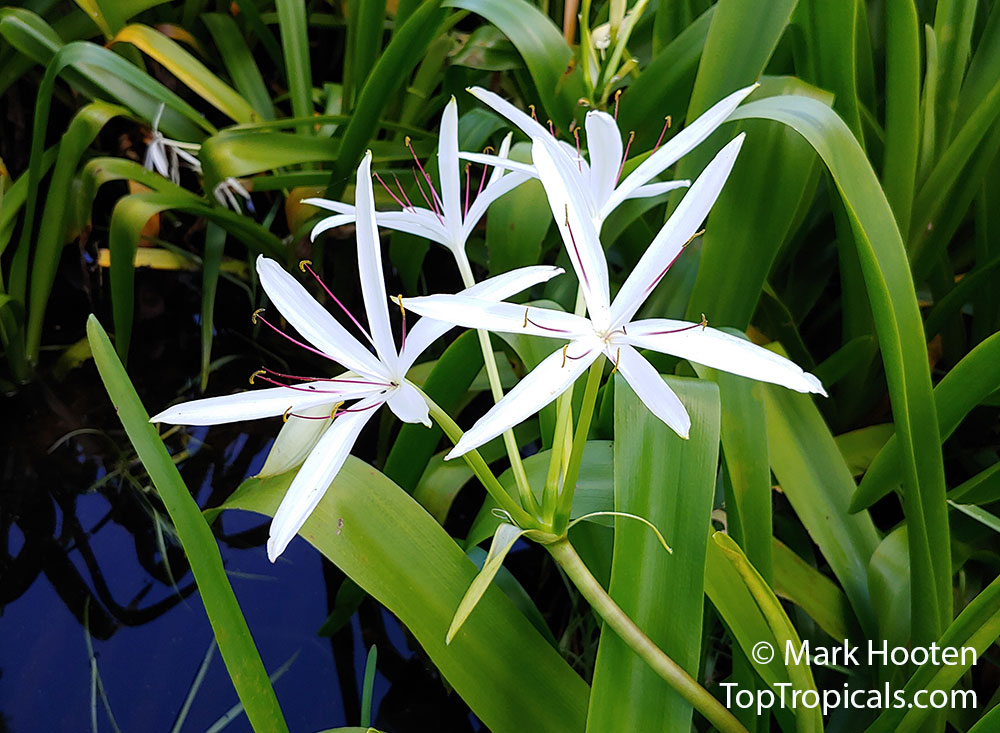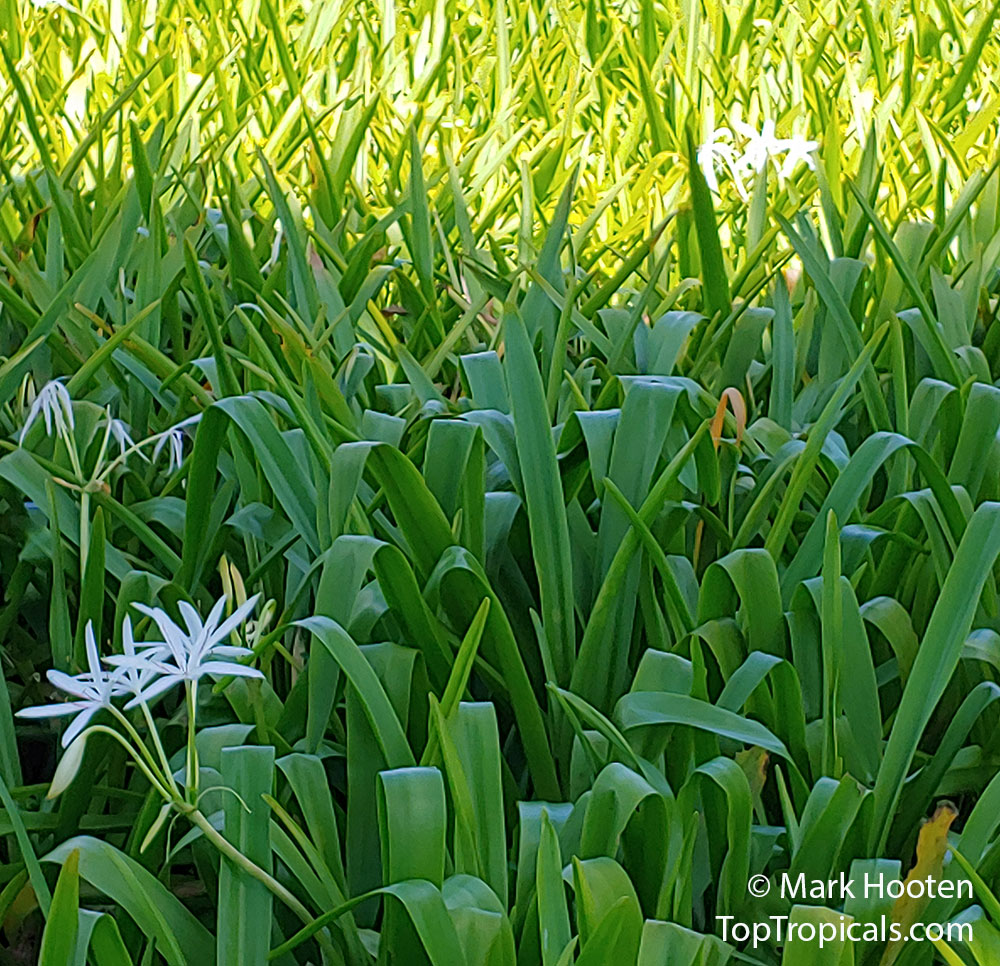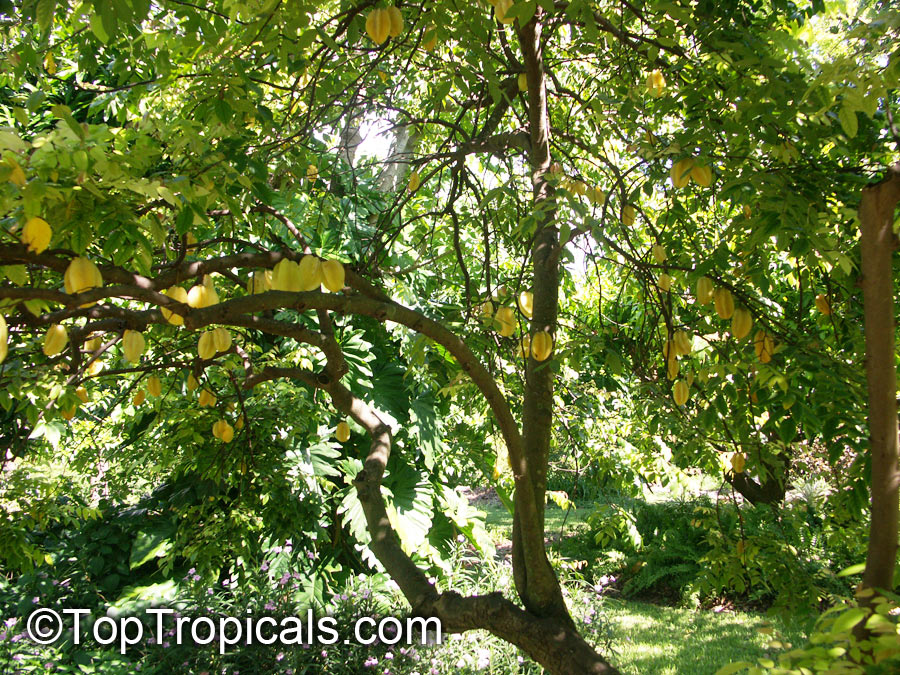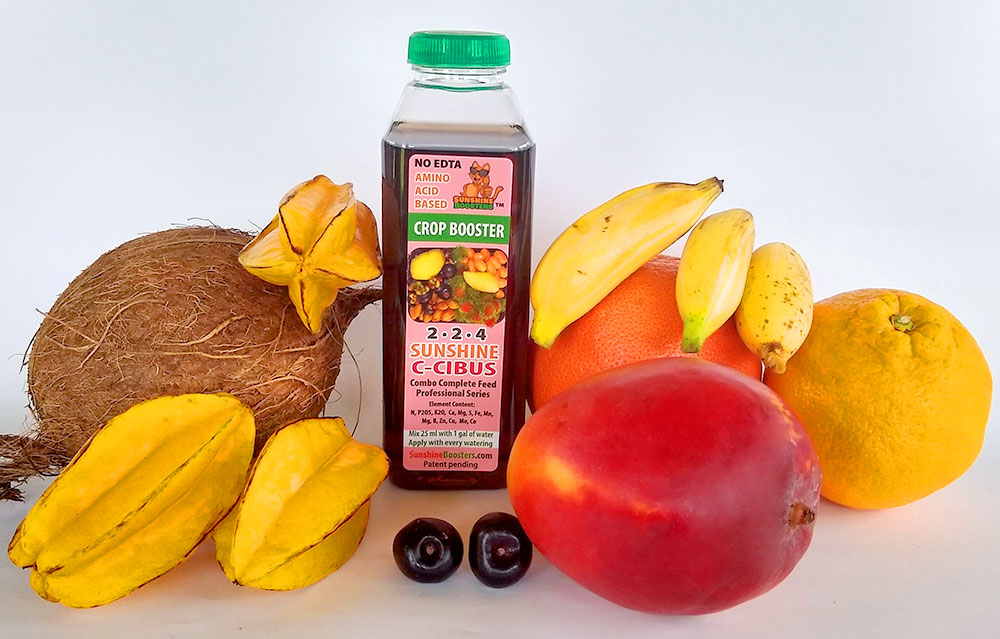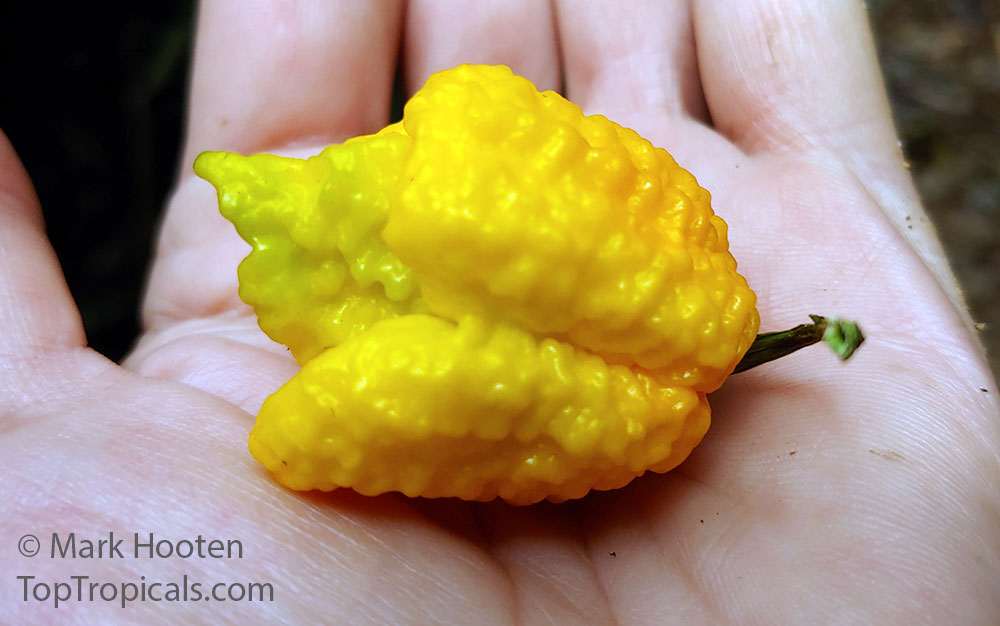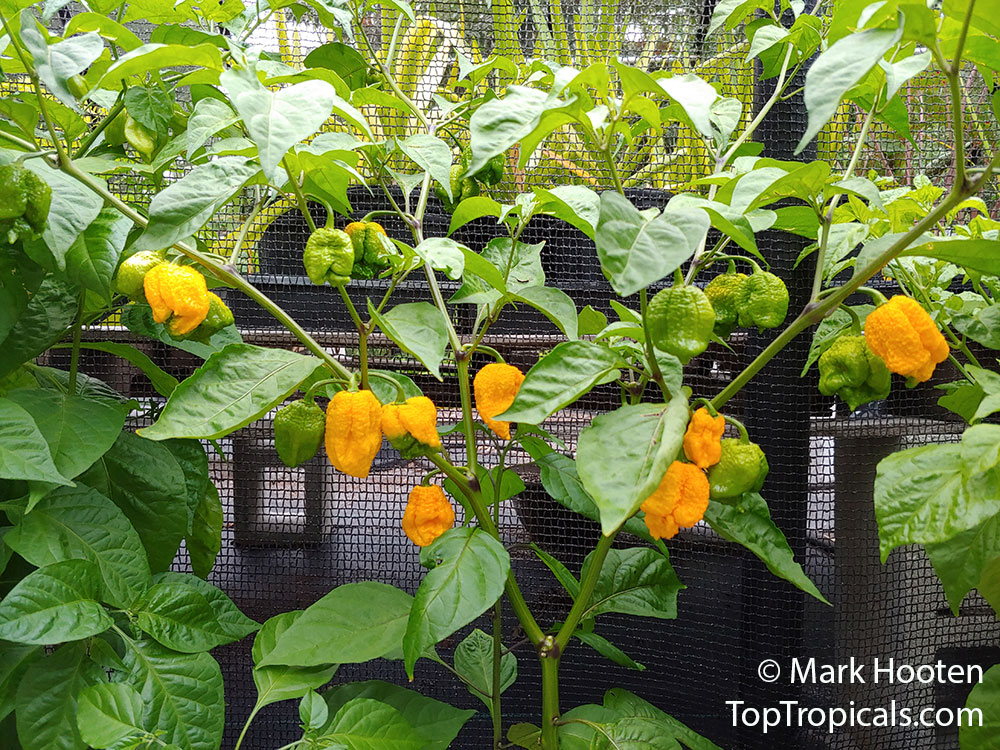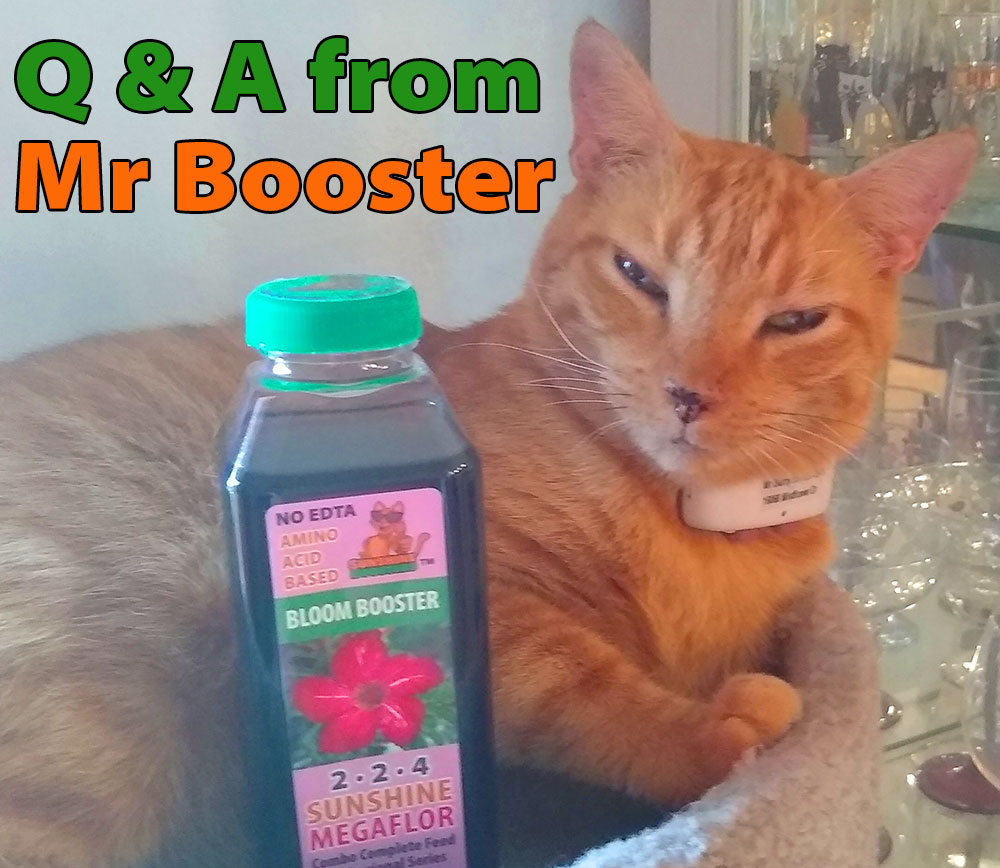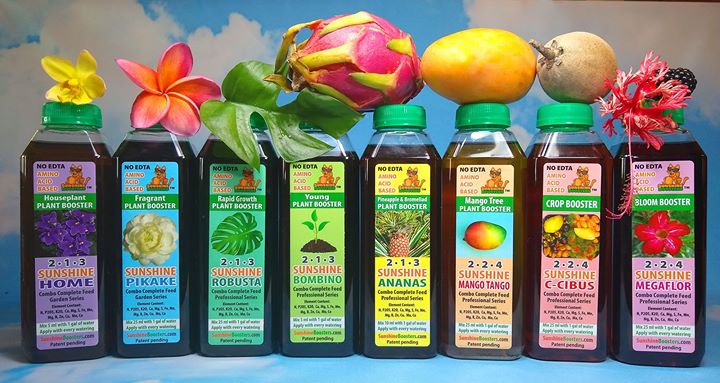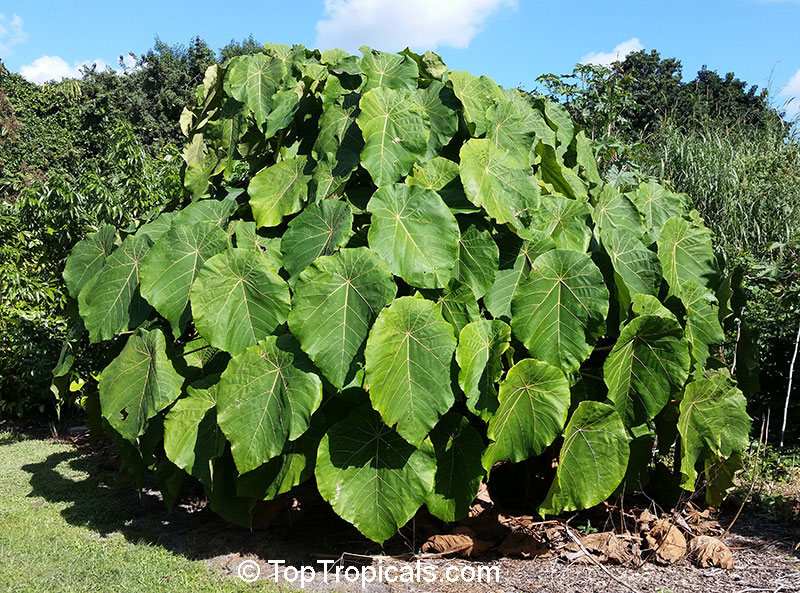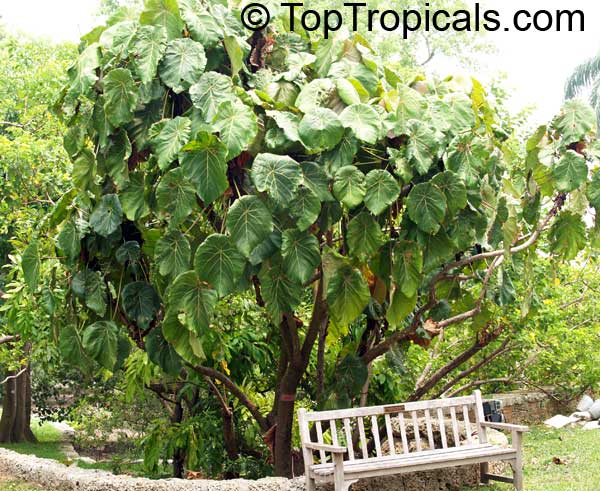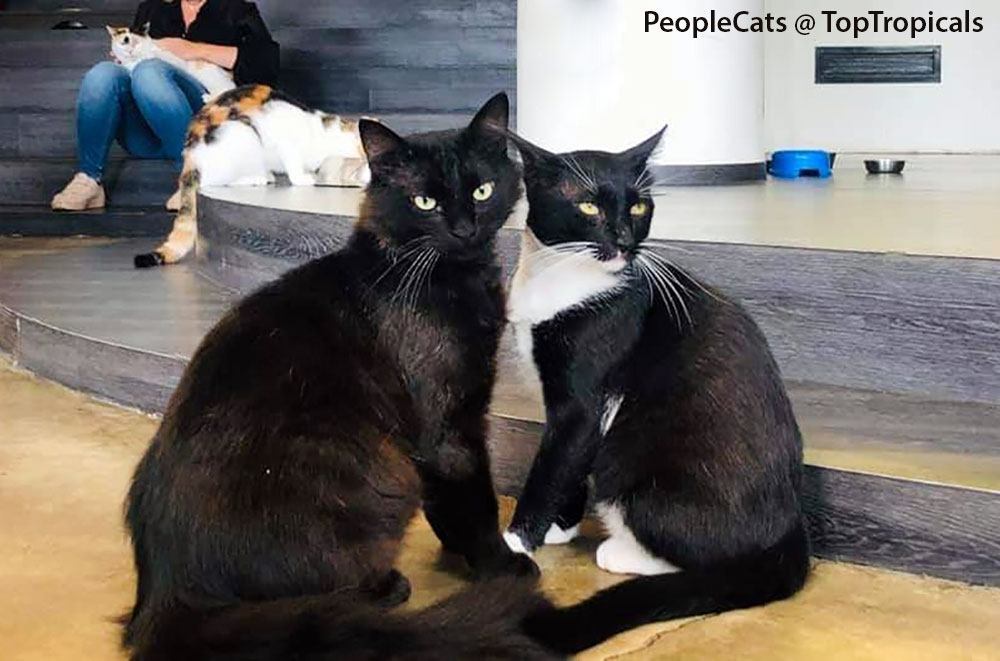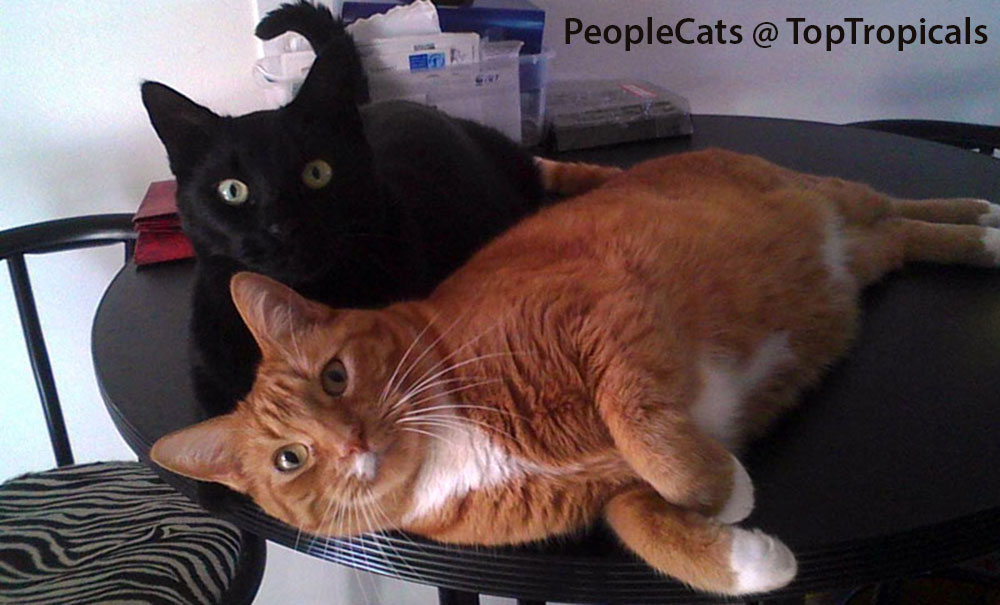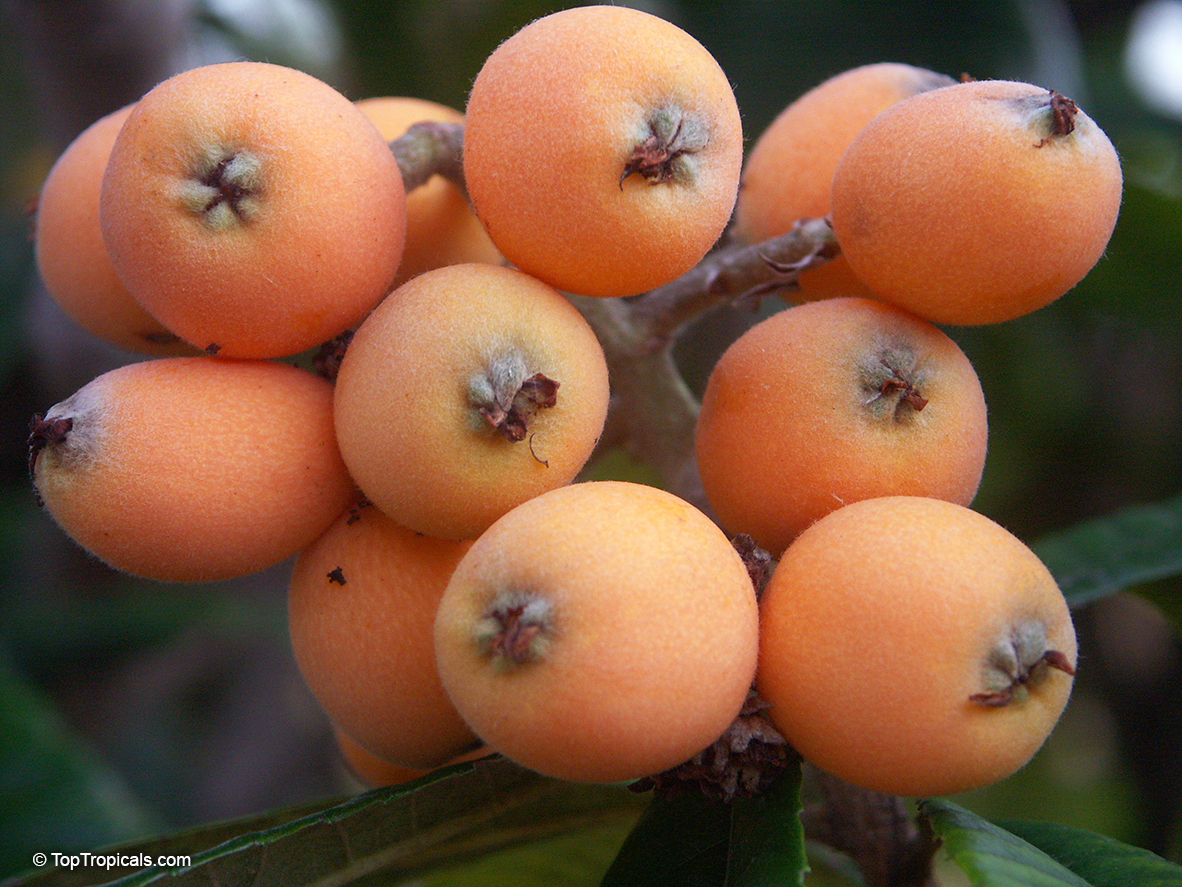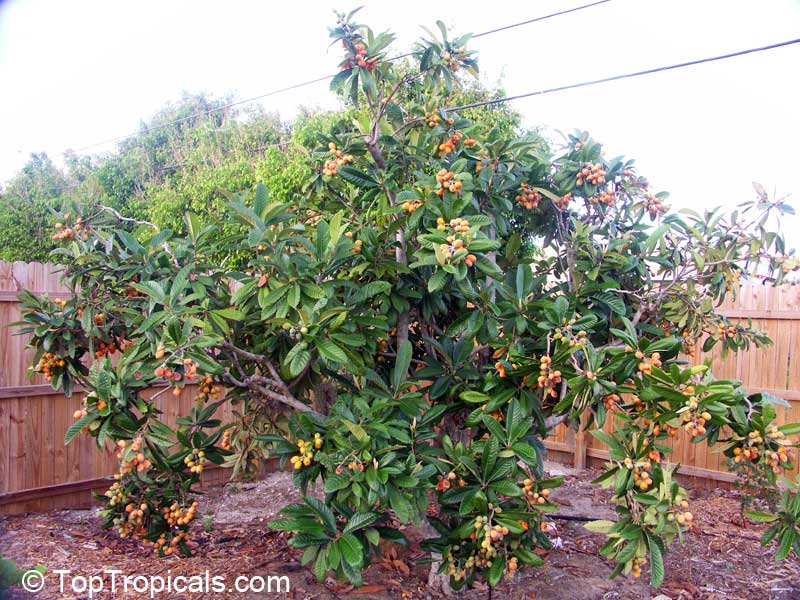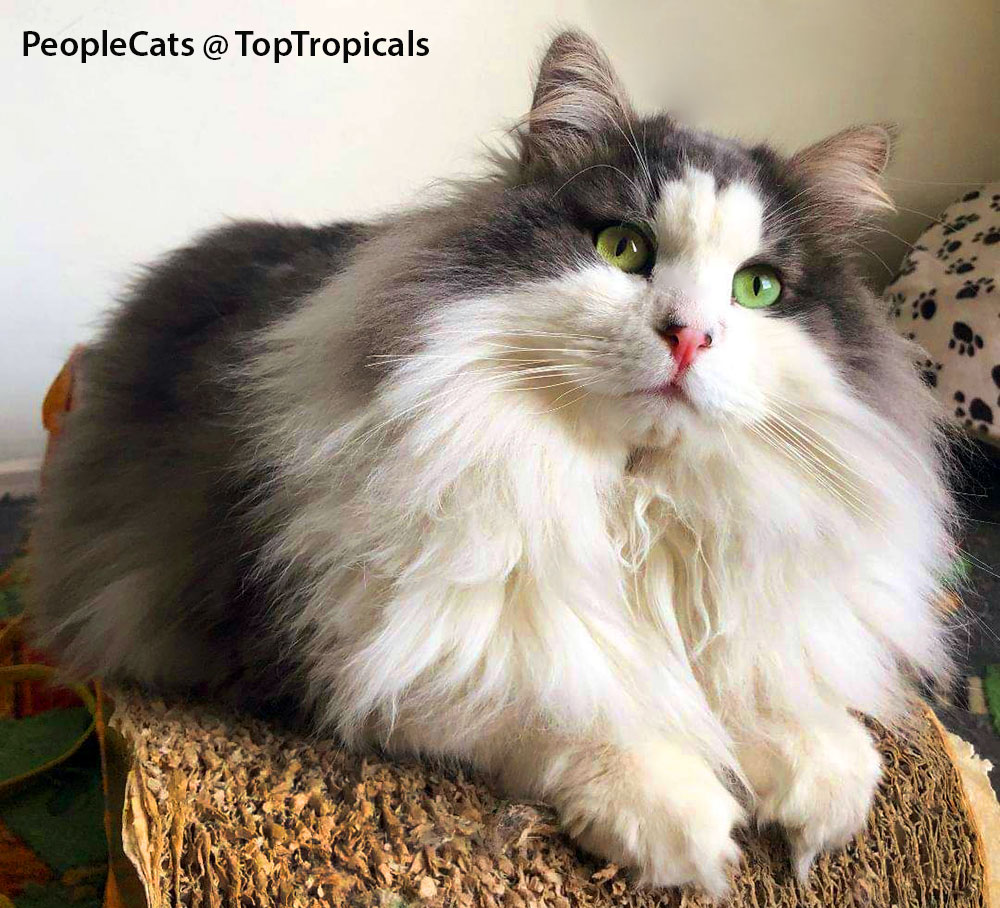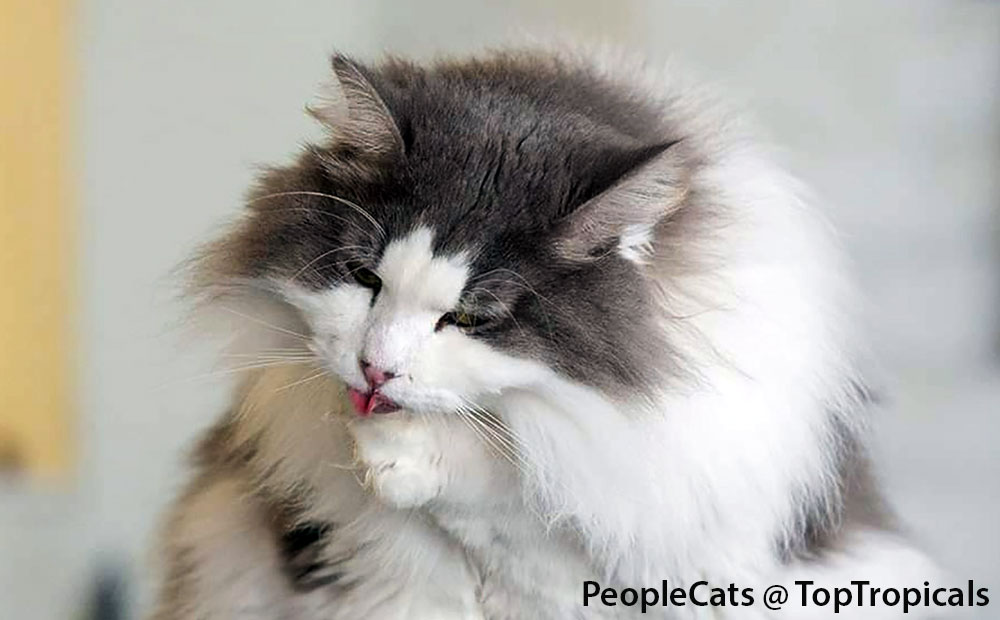Garden Blog - Top Tropicals
Date:
Coral Bean - Hummingbird Delight
Erythrina herbacea
by Onika Amell, tropical plant expert
Q: I am creating a natural, native garden on the southwest coast of Florida. In some of the far corners of my landscape, my soil unfortunately is poor and my irrigation does not reach these areas. I am hoping to find something unusual and native to grow in these challenging areas of my garden. Any luck of finding something tough that will also attract hummingbirds and/or butterflies?
A: Most of us have these areas in our gardens where the soil is sandy or where irrigation simply does not reach. It is always wise to choose tough, native plants that will grow in these areas with minimum care, fertilizer or the luxury of being watered regularly.
One plant to consider is the Coral bean or Erythrina herbacea. This legume, native to the southern portions of the United States, is Florida-friendly, unusual and a great choice for natural and informal planting. It will add interest to these challenging area(s) of your landscape from spring to fall...
CONTINUE READING >>
Date:
Healthy Plant Food
Q&A from Mr Booster
Establishing Avocado Tree
Q: I received my avocado Wurtz tree yesterday. Per instructions I have put the tree in a pot first. However I am having difficulty deciding what to trim off. Yesterday I removed obvious damaged leaves. However as you can see, the leaves are lighter in some areas and contain yellow and red in some spots. What would you advise? Given this is a critical state as I do not want to shock the tree after the trip, I would like to do everything possible to protect it and ensure viability.
A: Your Avocado tree looks great and healthy overall. You've done excellent job planting it. Wurtz is a good, vigorous variety, while the tree is somewhat dwarf,
great for containers.
You are right, it is the best for the tree to leave it alone and do not
trim or remove leaves any more, until it starts showing new growth. Then it will
be obvious what needs to be trimmed. Reddish/orange color of young leaves is
normal. If any spots or dots - no need to remove those leaves yet. Wait
until the plant grows more leaves. It needs them for photosynthesis, in order to
become stronger.
Keep the tree in bright shade and gradually move from filtered sun to
full sun. Water daily. Within a week or two after planting, you can start
applying mild fertilizer and micro-elements. We recommend at this growth stage:
SUNSHINE C-Cibus - Crop Nutrition Booster
SUNSHINE SuperFood - Micro-element Plant Booster
SUNSHINE C-Cibus - Crop Nutrition Booster from Garden Series, or Combo Total Feed Collection - all nutrients in just one bottle, for fruit trees and edibles.
Date:
An unknown Florida native Swamp Lily?
Crinum americanum Punta Rassa Giant
by Mark Hooten, the Garden Doc
This unknown Florida native form of Crinum americanum might actually
represent an unpublished species! We have a few of these, they are very special
and now nearly 2 years old plants.
This most beautiful and fragrant of Florida's native lilies, most commonly
known simply as "Swamp Lily", has a very wide native range, extending from
the Everglades northward across all of the Gulf states. While being wide-spread
in distribution, natural colonies generally occur widely separated from one
another, often by miles. Because isolation of breeding populations often
leads to speciation due to intense in-breeding, many of these populations develop
traits which make them distinct...
CONTINUE READING >>
Date:
Healthy Plant Food
Q&A from Mr Booster
Plant food for a Star Fruit
Q: I have 2 Starfruit plants from you. One on the left is B10 has a lot of flowers but no fruit is developing. On the rite is Kenjeng. This one has no flowers at all. Both plants are growing very well. Plenty of sun and water. I am located in Boynton Beach Florida. So what to do?
A: Your trees on the pictures look very healthy, congratulations
with a great care!
Starfruit, as well as other grafted fruit trees (like mango, avocado, etc)
usually flower/fruit easily and readily while in pots in the nursery.
Sometimes, once planted in the ground, they may reduce flowering or even stop
flowering. What happened?
The answer is simple. In pots, we fertilize them on regular basis. In our
nursery, we have fertilizer injector inline with irrigation system that dozes
plant food with EVERY watering. In other nurseries, they may also use
slow-release fertilizers, but it is still a regular routine to provide plant food to
potted plants.
In the ground, especially in Florida poor soils, fruit trees may stop
flowering or delay fruiting due to lack of nutrients, or dis-balance of elements
in the ground. Without fertilizer, a tree may take extra time to develop
bigger root system to reach out for necessary elements, and eventually will start
fruiting anyway.
But we want it to fruit soon! The only way to fix the problem is to provide
fertilizer on regular basis for a young tree. It is especially important
during hot summer months when plant metabolism is fast due to high temperatures,
plus nutrients may get washed away with frequent summer rains (like we have
in Florida) even if you've added some fertilizer at time of planting.
You can use smart release fertilizer once a month during hot season,
this one or similar:
Mango-Food - Smart Release Fruit Tree Booster.
But the most effective way to get a tropical tree to flowering and
fruiting, is frequent applications of liquid fertilizer. We use Sunshine Boosters
with every watering on our plants. They work great even on hard cases and
weak plants, and you see the difference in a matter of weeks, sometimes even
days.
We recommend the following fertilizer that contains all necessary elements
for young fruit trees:
SUNSHINE C-Cibus - Crop Nutrition Booster
SUNSHINE C-Cibus - Crop Nutrition Booster from Garden Series, or Combo Total Feed Collection - all nutrients in just one bottle, for fruit trees and edibles.
Date:
Top Tropicals Golden Reaper
Gold Carolina Reaper pepper plants
by Mark Hooten, the Garden Doc
Because only people who are already well informed about SUPER HOT chili varieties are likely to be curious about these, there is no need for discussion about the history of what could be termed the "Hot Chili Wars"... Anyone reading this likely knows the chili variety which currently holds the official world's record for heat is a red one called 'Carolina Reaper'. They have a very unusual shape and texture.
Our distinct variety - Gold Carolina Reaper Pepper - originated from a batch of seeds of the
regular red fruited 'Carolina Reaper' (received directly from the breeder).
Out of the regular red fruited seedlings grew a plant producing truly brilliant
orange-gold colored fruits. As this plant was much more healthy, vigorous,
and productive than the normal red ones, (even producing considerably larger
fruits and just as searingly hot), we segregated and isolated that one. Seeds
from that specimen were then grown out to see the result, which, happily all
came out exactly identical to and as vigorous as the original gold parent.
Our plants have been grown from those.
We have very strong plants beginning to bud-up!
Date:
Sunshine Boosters: Healthy Plant Food
Q&A from Mr Booster
This year we introduced many new items to Sunshine Boosters selection - for all your plant needs in the garden. We receive lots of feedback and questions, so it is time now to share this information with all our customers and open this new section in our Newsletter -
From Mr Booster: Q&A
We promise that we will keep up with your favorite Cat of The Month blog as well!
Dry, liquid, or both?
Q: I have bought different plant boosters, and I am so exited to use them on my plants! I understand that Sunshine Boosters are better than traditional fertilizers, should I give up dry fertilizers all together, or can I continue using them? They are so easy, don't require any mixing...
A: We are all busy and it seems at first like a little bit of
work with all the mixing, but it saves your time in a long run! And money
too.
When we used dry fertilizers, every now and then a plant got killed, some
looked undernourished (or over-fertilized) and unhappy. It was always a
challenge to figure out which plant needs more and which needs less, and how often.
It made us use more and more chemicals trying to adjust the feeding balance,
and we had to worry about why a plant doesn't look happy. Sometimes we lost rare, valuable, collectible plants since we couldn't find a cure for their illnesses.
With Sunshine Boosters, those problems are gone now! See examples.
Compare using Sunshine Boosters with eating healthy, well-balanced food.
You can still survive on junk food and won't die from starvation, but eventually eating junk food will take its toll and create health problems. So you will end up trying to fix them with more and more medicine... which in turn will create more side effects.
By using Sunshine Boosters, you provide all necessary elements and vitamins
to plants without a risk of side effects or building up unnecessary
junk/toxins in their system. No more leftovers!
According to tests, Sunshine Boosters are used up completely through plant metabolism, making them healthy, strong, and disease resistant. Sunshine Boosters are based on organic amino-acids which is the foundation of life on Earth. This helps to eliminate nutrients lock up in soil. See why Sunshine liquid fertilizers are better than dry fertilizers.
To answer your question, we recommend to switch to liquid Sunshine Boosters. It is possible to additionally use dry granulated "smart-release" fertilizers for in-ground plants, no more than once a month and only during hot season (Sunshine Boosters can be used year-round). However, some customers ran independent tests and admit that using Sunshine Boosters alone is more effective than in combination with dry fertilizers. See review from Karma Nursery.
Garden Series, or Combo Total Feed Collection - all nutrients in just one bottle, for different plant types. See booster in this collection, for different types of pants.
Date:
Macaranga grandifolia - Elephant Ear Tree
The very quintessence of tropical foliage luxury
by Mark Hooten, the Garden Doc
Why is this wonderful little tree so unknown here in Florida? I can only guess it's because people don't see them, and therefor don't know about them, and that basically no nurseries grow them. Yet it's one of the most utterly spectacular foliage plants conceivable... Provided with an appropriately warm climate such as South Florida or elsewhere, there is no reason they should not be seen more often (for purposes of utter awe).
CONTINUE READING >>
Macaranga's genuinely grand foliage much more resembles the ears of actual elephants (esp. the Asian species) than do the leaves of the much more commonly known and grown "elephant ears" meaning certain Alocasia and Colocasia.
Date:
PeopleCats of the World. Cats of The Day: Theodor and Arthur from the Cat Cafe
We received many replies from Garden Cat Lovers to our previous Blog about Cat Cafe
Nurri Kassikohvik. We continue introducing a few other PeopleCats from
the Cafe: Theodor (pure black) and Arthur (tuxedo).
Theodor and Arthur are security guys. They sit at the front door and make
sure everyone passes their face-control... while they take care of each
other's faces...
TopTropicals PeopleCat Club and Zoo
Thank you for supporting us in helping PeopleCat Community!
Make
your kind donation today and receive a surprise gift from us! Every little
bit helps. Thank you and God bless you and your pets!
Date:
The best grafted Loquat varieties
at 15% OFF for 3 days!
Q: I have a nice Loquat tree started from seed. I understand it will not bear fruit unless grafted. Can you graft the tree in your nursery? If this is not possible let me know the cost of Loquat tree and I buy it from your nursery.
A: From our experience, Loquat trees grown from seed bear fruit
much sooner (within 5-6 years) than seedlings of such trees as Mango and
Avocado (8-15 years). Also, unlike Mango and Avocado, the fruit quality of a
Loquat seedling is usually not too bad. However, in order to have a tree with a
superior fruit, it is recommended to plant grafted variety for a guaranteed
tasty crop. If your seedling is already a large plant (with a trunk diameter
over 5 mm), it may be too late to graft it, because quality graft requires fresh
wood.
If you have plenty of room in your yard with enough space for both grafted
tree and a seedling, you may still plant the seedling in the ground and give
it a chance to produce in a few years. If your garden space is limited, we
recommend you to plant a grafted variety and enjoy fruit as soon as the next
year.
The most popular grafted Loquat varieties, heavy
producers:
Champagne
Christmas
Gold
Nugget
Yehuda
SALE: 15% OFF now, no min. order!
- $20% OFF discount code PARENTS2020 for orders over
$200
- 5% automatically off all orders over $100
= make it a steal!
Offer expires 7-28-20
If you are local, stop by our Garden Center and we will pick the biggest
and the best tree for you. Or just order online and get it in just a few
days to your doorstep!
See full list of Loquat varieties available at the moment.
Date:
PeopleCats of the World. Cat of The Day: Sabake from the Cat Cafe
We continue inviting PeopleCats of the World to our Blog. Today's cat of
the day is visiting us from Cat Cafe Nurri from Tallinn, Estonia - Nurri Kassikohvik (Nurri means Purr!). Our columnist Alex Butova has visited enchanting Nurri Cafe especially for this
report!
This amazing cat project is supported by donations, cat gift shop, as well
as order surcharge - $6.50 per customer. Nurri Cafe is a foster home for cats
rescued from different troubles. Some of these cats eventually find their
forever homes when adopted by the customers. But some have become Nurri's
family members, the cafe is their permanent home, and of course - place of
work.
One of such permanent residents is a fluffy beautiful Sabake (BTW "sabaka"
in Russian means "dog"... well, it is what it is!)
Sabake's main responsibility is checking out customers at the cash
register. She also advertises souvenirs and offers to sign the Guestbook - which is
she uses as a napping mat.
Sabake is very proud of her beautiful, long, thick fur. Cafe employees have
a daily task of grooming her fur coat which is quite a job!
In May 2020, during the world's shut-down, the MAOW Academy hosted a webinar from this cafe: "For
everyone who cares how the life order of "stay home" worked on cats and how they
get used to the "old" life order again."
In the photo: Sabake napping on the Guestbook
TopTropicals PeopleCat Club and Zoo
Thank you for supporting us in helping PeopleCat Community!
Make
your kind donation today and receive a surprise gift from us! Every little
bit helps. Thank you and God bless you and your pets!
